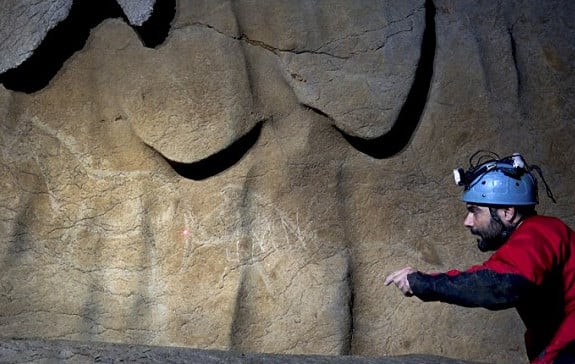Law & Politics
30,000-Year-Old Cave Paintings in Danger of Destruction
Can Australia save the precious works from miners before it's too late?

Can Australia save the precious works from miners before it's too late?

Lorena Muñoz-Alonso

Half of Australia’s cave paintings and other rock art are said to be in danger of disappearing within the next 50 years, reports the Guardian. Some of the works are over 30,000 years old. In the northeast of the country, the Quinkan galleries are already in serious risk of crumbling due to mining exploration nearby. The galleries are one of the world’s largest collections of rock art.
Australia is rich in cave and rock paintings, with an estimated 100,000 sites. But surprisingly there is no central registry or strategy to preserve the cultural treasures. Professor Paul Taçon, a rock art specialist, complained to the newspaper about the lack of interest in protecting this ancient heritage, saying: “France and Spain spend vast amounts of money conserving their rock art, even China is spending millions and putting in a world heritage application for rock art that is 2,000 years old.”
He continued: “In Australia there is almost no money there for that kind of work. I don’t know if we need to do an ice bucket challenge or what, but it’s really difficult to get the funding to keep these areas for future generations.”
Dating back at least 30,000 years, the sandstone Quinkan galleries sit on a rich band of coal that stretches across Cape York, near the remote town of Laura. A handful of rare and expensive minerals, such as diamonds, are also found in the area.
These resources have lured a number of mining companies to the region. Some of those firms have established settlements near the irreplaceable cave paintings with current permits to mine in the area until 2018.
Indigenous rangers say the local community is united in its opposition to mining and is mounting a rear-guard action to get the area properly protected. They warn that vibrations from nearby road construction have already split the delicate sandstone in some places.
Unfortunately, it is not only the impact of mining that is threatening the conservation of these prehistoric treasures. “Graffiti is a worry and seems to be on the rise,” explained Taçon. “People leave names and initials behind. Sometimes, even racist comments. I spoke to some Aboriginal friends from Uluru and the Pilbara and they both said graffiti is their biggest concern. These [ancient artworks] are central, tangible aspects of their culture.”
Although the federal government has expressed a desire to intervene and protect the area, it missed a deadline for a UNESCO world heritage nomination last February, which generated doubts and anxiety among the concerned parties.
“The Quinkan galleries are outstanding and clearly of world heritage value. But we need a national strategy for rock art or it could be lost, especially if the government goes ahead with the development of northern Australia. There just seems to be a lack of will,” laments Taçon.